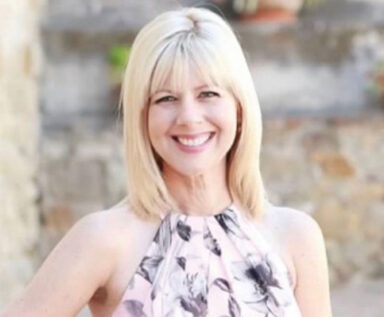Medical Marijuana: A Patient’s Perspective
- By Trudie Mitschang

PRIOR TO being diagnosed with ovarian cancer, Angela Matthews says she was about as straitlaced as they came. For her, the very idea of using marijuana for any reason was simply out of the question, until a recommendation from her chemotherapy nurse opened her eyes to its lifesaving potential.
BSTQ:Tell us about the events leading up to your experience with medical marijuana.
Angela: I have never had the desire to use drugs, and I have avoided them my whole life. I am 46 years old and still have never smoked a cigarette. So, when I was told about medicinal marijuana after being diagnosed with stage 3 ovarian cancer, I thought: Not now, not ever. I had seven different prescriptions to help me with the chronic pain and nausea that hit me after my nine-hour surgery and first round of chemo. The problem was none of them worked. After a month of this ordeal, I was down to 100 pounds and was told if I lost any more weight, they were going to have to stop treatment. I still had five more rounds of chemo to go, and it was way too early for this wife and mother of four to give up the fight.
BSTQ: How did your doctor decide medical marijuana might be the right treatment?
Angela: My chemo nurse knew I was dealing with the combination of severe abdominal pain and nausea, which made it impossible for me to eat. She told me her mom battled leukemia and had the same issues with eating. Medical marijuana is what enabled her to eat again. I spoke with my oncologist, and she suggested we give it a try.
BSTQ: What was your prescription?
Angela: The prescription was for medical cannabis, which is very general. The doctor who prescribed it left it up to me to choose which kind. In California, you can’t get medical marijuana from the place that prescribes it; you have to take your prescription to a dispensary. I called and explained my symptoms and told them I was a mother of four young kids and I didn’t want to feel “loopy.” I wanted something that I didn’t have to smoke to help with pain management, appetite and nausea. The dispensary employee suggested I go with drops that I could put in my protein shakes and an edible product in the form of a dark chocolate almond candy bar. They contained equal ratios of CBD (cannabidiol) and TCH (tetrahydrocannabinol) strains to give me the appetite and pain relief I needed without feeling “euphoric,” as the dispensary employee put it.
BSTQ: How did you react to the treatment?
Angela: I had not eaten much for so long that I had to set a timer to remind myself. The first time the alarm went off for my snack time, I opened a bag of almonds and not only did I eat them all, there was no stomach pain! The same thing happened for lunch and all the other times my alarm went off. I was eating again, and my stomach didn’t hurt. All this within hours of drinking my shake with the special ingredient.
BSTQ: What other changes did you notice?
Angela: I still did not have a big appetite, but the marijuana gave me enough relief from my nausea and stomach pain to eat every meal and every snack. I felt the strength coming back into my body almost instantly. I also ate half a square of my candy bar before bed to help with sleep and pain at night.
BSTQ: How long were you on the treatment?
Angela: I kept up this pattern for each round of treatment. During the weeks I received chemo, I took the drops in the morning and ate half a square of chocolate at night. Some days, I needed a little more, but this seemed to be the right formula. I used the medical marijuana for five rounds of chemo for roughly three months.
BSTQ: Did your personal experience with medical marijuana change your view of how it is used?
Angela: I don’t know what would have happened if medical marijuana was not available to me. I could have found other options, but who knows how long that would have taken or how much pain or weight loss I would have endured. I am so grateful for this quick and easy solution. Had it not been for marijuana, I don’t know if I would have survived. Medical marijuana is not legal in every state. It’s sad to think I may not have beat cancer if I lived in a state where medical marijuana was not an option. I think the biggest lesson learned was letting go of the stigma. If a drug is legal and available, there should be no shame in taking it to survive sickness or cope with pain.
.
